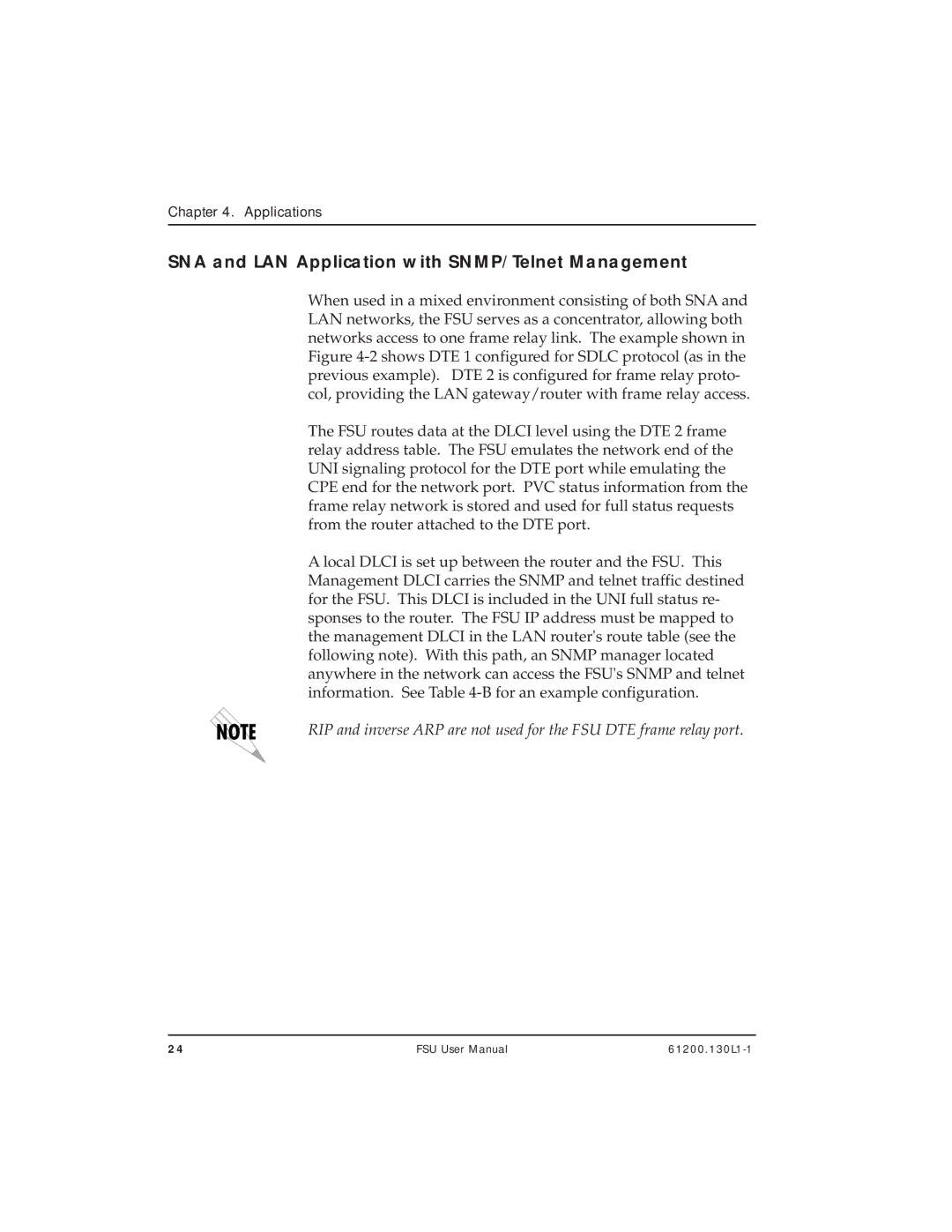
Chapter 4. Applications
SNA and LAN Application with SNMP/Telnet Management
When used in a mixed environment consisting of both SNA and LAN networks, the FSU serves as a concentrator, allowing both networks access to one frame relay link. The example shown in Figure
The FSU routes data at the DLCI level using the DTE 2 frame relay address table. The FSU emulates the network end of the UNI signaling protocol for the DTE port while emulating the CPE end for the network port. PVC status information from the frame relay network is stored and used for full status requests from the router attached to the DTE port.
A local DLCI is set up between the router and the FSU. This Management DLCI carries the SNMP and telnet traffic destined for the FSU. This DLCI is included in the UNI full status re- sponses to the router. The FSU IP address must be mapped to the management DLCI in the LAN router's route table (see the following note). With this path, an SNMP manager located anywhere in the network can access the FSU's SNMP and telnet information. See Table
RIP and inverse ARP are not used for the FSU DTE frame relay port.
24 | FSU User Manual |
